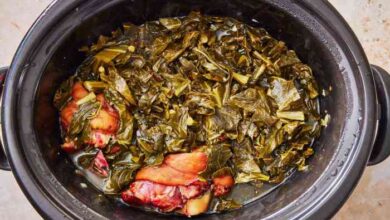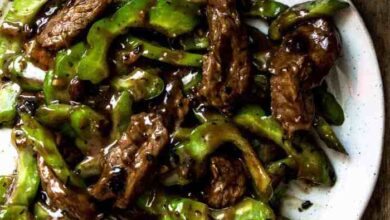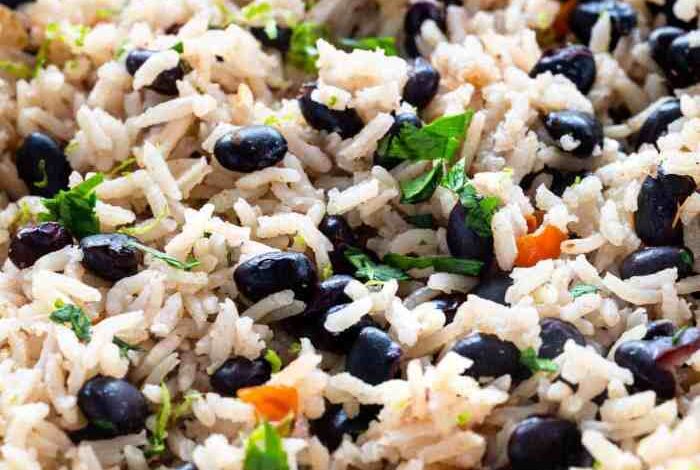
Black Beans and Rice: A Global Culinary Staple
Black beans and rice, a seemingly simple pairing, transcends mere culinary convenience. It’s a symphony of flavors and textures that has captivated palates worldwide, weaving itself into the fabric of cultures and cuisines. This humble dish, often a cornerstone of Latin American and Caribbean diets, offers a nutritional powerhouse packed with protein, fiber, and essential vitamins.
Beyond its nutritional value, black beans and rice hold a rich history, reflecting the ingenuity and resourcefulness of diverse communities throughout the ages.
From the vibrant streets of Havana to the bustling markets of Rio de Janeiro, black beans and rice have become synonymous with comfort, tradition, and culinary creativity. This culinary masterpiece has taken on countless forms, from hearty stews and flavorful rice dishes to vibrant salads and even decadent desserts.
This journey into the world of black beans and rice will explore its origins, its diverse culinary applications, and its enduring cultural significance.
Variations
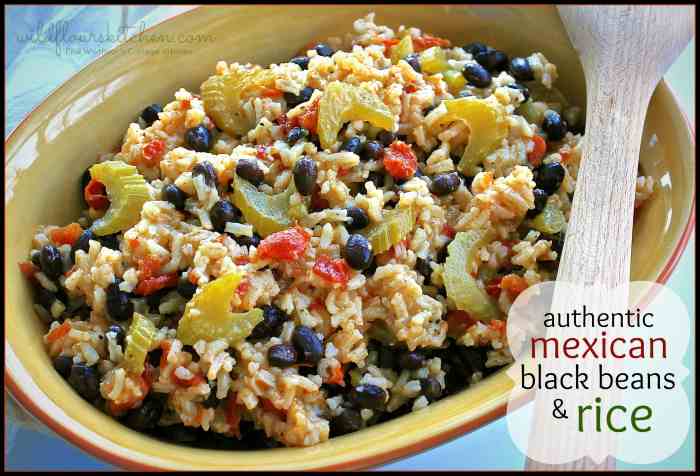
Black beans and rice, a staple in many cuisines around the world, offer a delicious and versatile base for countless culinary creations. The beauty of this dish lies in its adaptability, allowing for endless variations based on different bean and rice varieties, spices, and cooking techniques.
This exploration delves into the diverse world of black beans and rice, showcasing the unique characteristics of various ingredients and inspiring you to experiment with new flavors.
Black Bean Varieties
Different black bean varieties possess unique characteristics, influencing their flavor profiles and culinary applications. Exploring these variations can significantly impact the final dish, adding depth and complexity to your culinary repertoire.
- Black Turtle Beans:These beans are small, dark, and have a firm texture with a mild, earthy flavor. They hold their shape well during cooking, making them ideal for salads, soups, and stews.
- Black Beans:The most common variety, black beans offer a rich, slightly sweet flavor and a creamy texture. They are versatile and can be used in a wide range of dishes, from burritos and tacos to dips and spreads.
- Aduki Beans:With a reddish-brown hue and a sweet, nutty flavor, aduki beans are often used in Asian cuisine. Their firm texture makes them suitable for salads, stews, and soups.
- Mungo Beans:These beans have a delicate, earthy flavor and a soft texture. They are often used in Asian cuisine, particularly in curries and stews.
Rice Varieties
Rice, the other key ingredient in this dish, plays a crucial role in defining the overall texture and flavor profile. Exploring the various rice varieties unlocks a world of culinary possibilities, from fluffy and light to chewy and nutty.
- Long Grain Rice:This type of rice is known for its long, slender grains that cook to a fluffy, separate texture. It’s often used in pilafs, stir-fries, and as a side dish.
- Medium Grain Rice:Medium grain rice has a shorter, wider grain than long grain rice, resulting in a slightly chewier texture. It’s a versatile choice for a range of dishes, including rice pudding, sushi, and paella.
- Short Grain Rice:Short grain rice has a round, sticky texture, ideal for sushi and rice balls. It cooks to a creamy consistency, making it a perfect base for desserts and puddings.
- Brown Rice:Brown rice is the whole grain version of white rice, retaining its bran and germ. It has a nutty flavor and a chewy texture, offering a more nutritious alternative to white rice.
- Wild Rice:Wild rice is not actually rice but a type of aquatic grass. It has a nutty flavor and a chewy texture, often used in salads, soups, and as a side dish.
Flavor Variations
Beyond the choice of beans and rice, incorporating various spices, herbs, and other ingredients can significantly enhance the flavor profile of black beans and rice. Experimenting with different flavor combinations allows you to create dishes that reflect your personal taste and culinary preferences.
- Spicy:Add a kick to your black beans and rice with chili powder, cayenne pepper, or jalapenos.
- Savory:Enhance the savory notes with cumin, coriander, oregano, or garlic.
- Citrusy:Add a bright, refreshing touch with lime juice, lemon zest, or orange peel.
- Smokey:Incorporate smoked paprika, chipotle powder, or smoked ham for a smoky depth.
- Herbaceous:Enhance the dish with fresh herbs like cilantro, parsley, or chives.
Black Beans and Rice in Popular Culture
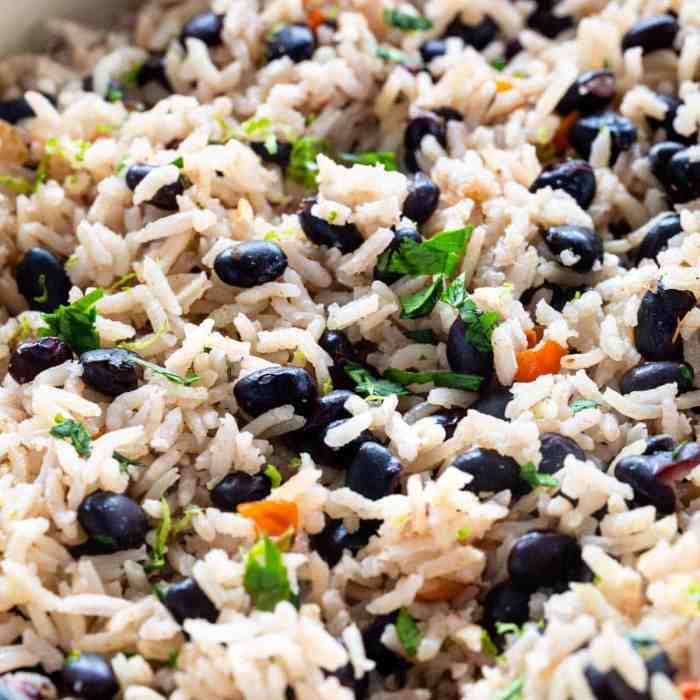
Black beans and rice, a staple dish in many cultures, have also found their way into popular media, showcasing their culinary significance and cultural relevance. From movies to TV shows and books, this humble dish has appeared in various forms, reflecting its diverse origins and global appeal.
Black Beans and Rice in Movies and TV Shows
Black beans and rice have been featured in a number of movies and TV shows, often as a symbol of cultural identity or a representation of everyday life.
- In the movie “Chef” (2014), the protagonist, Carl Casper, uses black beans and rice as a base for his signature Cuban sandwich, showcasing the dish’s versatility and adaptability.
- In the TV series “Orange is the New Black” (2013-2019), black beans and rice are frequently served as part of the prison meals, highlighting the dish’s affordability and practicality.
- In the movie “The Princess Bride” (1987), Westley, the protagonist, is forced to eat “the most revolting food” in the form of black beans and rice while imprisoned in the Pit of Despair. This scene satirically portrays the dish as something undesirable, even though it is a common and nutritious food in many cultures.
Cultural Impact of Black Beans and Rice in Popular Media
Black beans and rice have often been used in popular media to represent specific cultures and their culinary traditions.
- In movies and TV shows featuring characters from Latin America or the Caribbean, black beans and rice are often depicted as a central part of their meals, showcasing the dish’s cultural significance in these regions.
- In some cases, black beans and rice have been used to depict the socioeconomic realities of certain communities, highlighting the dish’s affordability and accessibility for people from diverse backgrounds.
- The dish has also been used in popular media to promote cultural understanding and appreciation for different culinary traditions.
Black beans and rice is a classic comfort food, but sometimes you need a little something extra to elevate the flavor. That’s where a simple, homemade pesto comes in. My go-to recipe is easy basil pesto with almonds , which adds a nutty, bright flavor that perfectly complements the earthy beans and rice.
It’s so easy to make and adds a whole new dimension to this simple dish.
Black beans and rice are a staple in my kitchen, a comforting dish that’s always satisfying. But sometimes, I crave something a little more elegant, something that feels like a special occasion. That’s when I turn to the delicate flavors of chicken and mushroom crepes.
The creamy mushroom sauce and tender chicken are a perfect pairing, and the thin crepes add a touch of sophistication. Of course, I always find myself returning to the hearty goodness of black beans and rice, but those crepes are a delicious detour when I’m feeling fancy.
Black beans and rice is a classic comfort food, hearty and flavorful. It’s the perfect base for a variety of toppings, from spicy salsa to creamy avocado. If you’re looking for a more adventurous addition, try a side of sweet and sour chicken thighs.
The sweet and tangy sauce complements the earthy beans and rice beautifully, creating a meal that’s both satisfying and exciting. And, of course, you can always add a dollop of sour cream or a sprinkle of cheese for extra richness.

